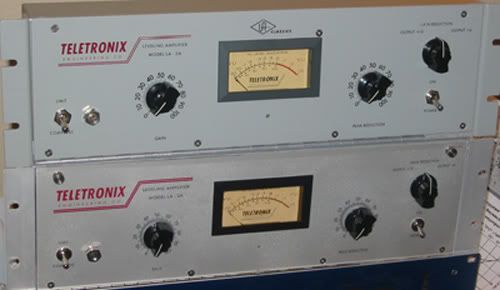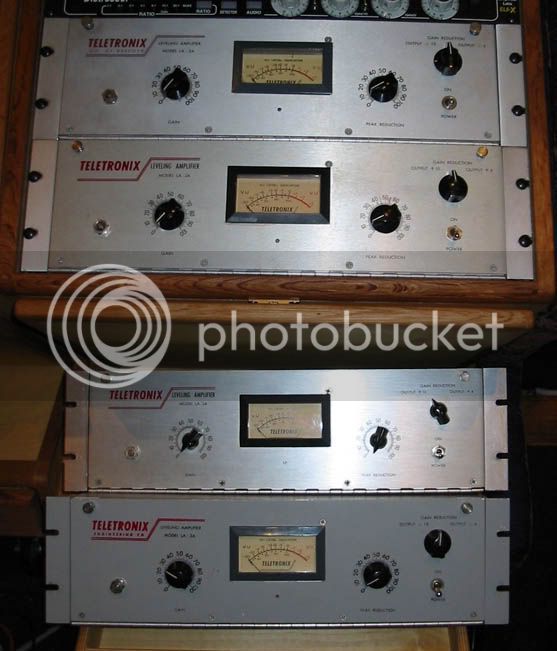Your sweeps are indeed typical, nothing to fix there.
R7, if you don't have the ability to plot rising-amplitude-at-fixed-freq sweeps, do the following:
Using a sine wave (1kHz is perfect) through a volume control, set the volume control so that it's about 20dB below maximum output, then set the peak reduction control of the LA-2a so that it is just at the threshold of gain reduction. Switch the output meter to '+4' and adjust the gain so that the signal is about 0VU. Leave the two front panel controls fixed in this position.
With the switch set to compress, turn the volume control on the incoming oscillator signal all the way off. Now, watching the meter carefully, raise the incoming signal volume. Beyond zero, the signal should climb steadily, but slightly, and should continue to climb as the incoming volume is raised.
Return the volume to off and wait 60 seconds for the LDS's to de-soak.
With the switch set to limit, watching the meter carefully, raise the incoming signal volume. Beyond zero, the signal should stop, neither rising nor falling. This is the 'ideal' straight line. If the signal rises steadily but slowly (more slowly than in 'compress' mode) then R7 is too small and should be increased. If the metered output signal actually goes *DOWN* as the incoming signal is increased, then R7 is too large. (this is "past-infinity" compression). If the signal first rises, then goes down, the rises again you have an s-curve... try swapping the LDRs over between metering and signal attenuation positions, and see if things are better that way round. If so, you'll need to re-calibrate R25 as well, to make sure that the meter tracks.
BTW... R25 (meter tracking) should be set in compress mode, not limit.
Keith





